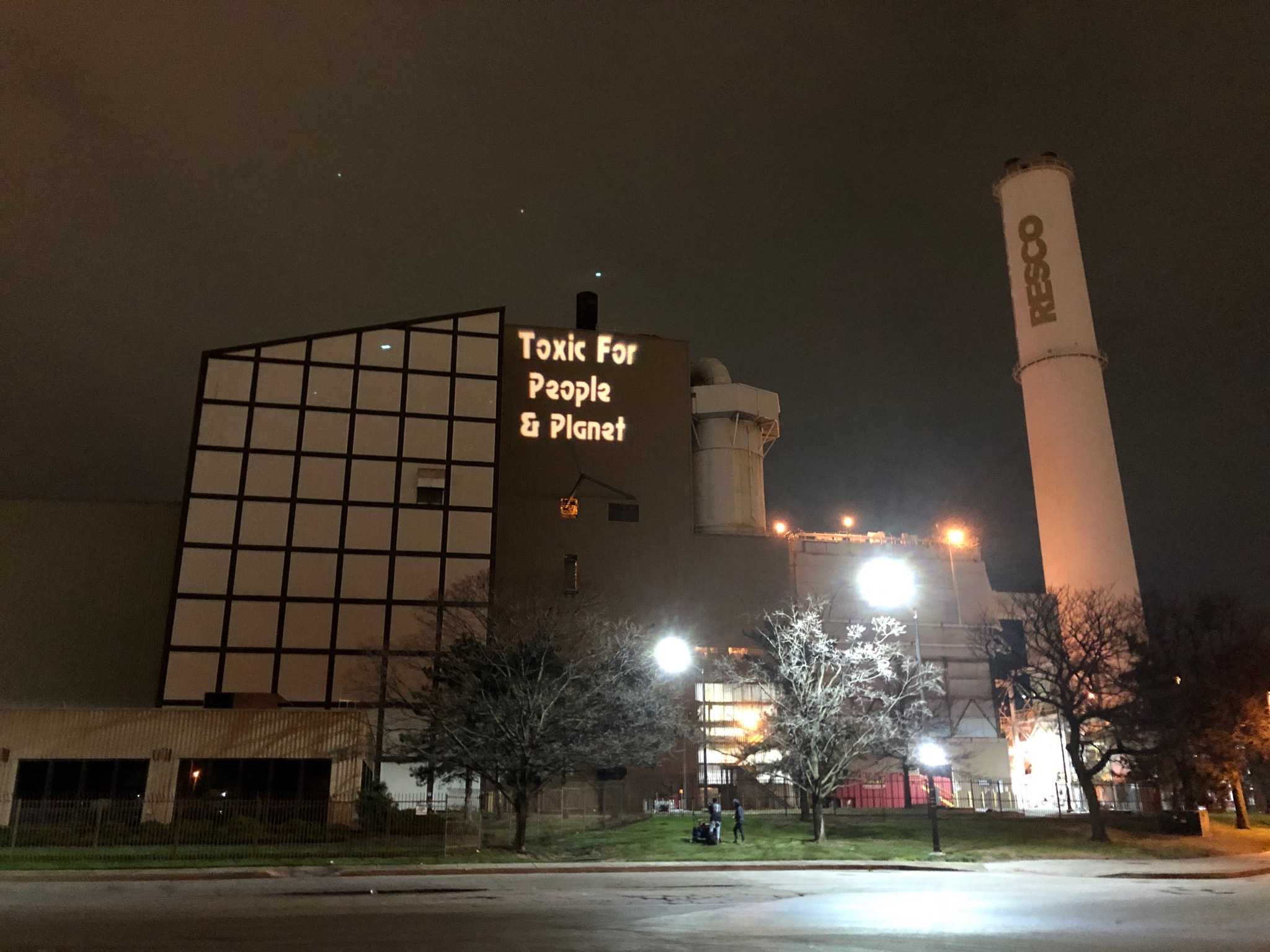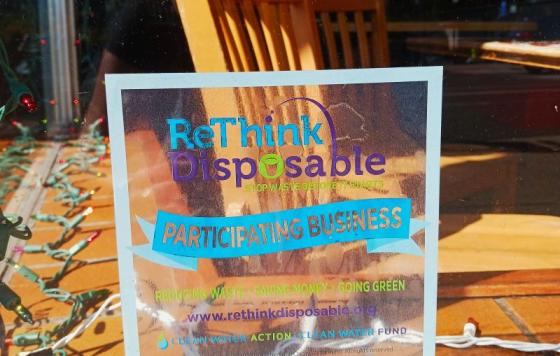
Testimony Supporting HB11
House Economic Matters Committee
March 4, 2022
Position: SUPPORT
Dear Chair and Members of the Committee,
Clean Water Action and the Reclaim Renewable Energy Coalition strongly support HB11, the Reclaim Renewable Energy Act, to ensure that Maryland’s public money for renewable energy is going toward truly renewable energy, not sources of energy that emit greenhouse gasses. We are in a climate crisis, and we cannot afford to be spending our renewable energy money on facilities that emit greenhouse gasses - now is the time to double down Maryland’s commitment to truly renewable energy and subsidize only facilities that are emissions-free.
Burning trash, chicken litter, and wood waste and manufacturing methane all pollute the environment, harm nearby communities’ health, and contribute to climate change: a bad investment of public dollars that every Maryland utility ratepayer contributes to. Every Renewable Energy Credit that goes toward a facility that emits greenhouse gasses is a Renewable Energy Credit taken away from a facility that does not - an egregious waste of public money.
Because of our work to support communities across Maryland that have fought or are fighting against trash incinerators and to develop Zero Waste infrastructure like compost facilities, we would like to bring the committee’s attention to reasons why trash is not a renewable resource and why incinerating or manufacturing fuel from trash is not renewable energy and should not be included in the Renewable Portfolio Standard.
-
RPS subsidies for trash incineration were originally intended to sunset in 2019.
In 2004, Maryland passed legislation to create our Renewable Portfolio Standard. When the legislation creating Maryland’s Renewable Portfolio Standard passed in 2004, trash incineration was included as a Tier 1 energy provider. As a tier two energy provider, these subsidies were supposed to stay stagnant at 2.5% of the market with an eventual phase out in 2019 - a recognition that trash incineration is not as desirable or valuable as truly renewable energy like wind and solar power. However, in 2011, the incinerator industry mounted an intense effort to move trash incineration to Tier 1 as two new proposed incinerators were on the horizon in Maryland: one in Frederick serving Frederick and Carroll Counties, and a second one in South Baltimore. The two proposed incinerators were ultimately rejected by the communities they targeted, due to the high pollution levels and high financial burden the incinerators would have brought. However, trash incineration remained in the RPS as a legacy of those failed projects, in the more highly subsidized, permanent Tier 1 category.
-
The trash incinerators currently receiving RPS subsidies were built and operated before the RPS was created.
Two Maryland incinerators currently receive RPS subsidies, and both were built and operated well before the RPS was created and they became eligible for subsidies, either in Tier 1 or Tier 2. Baltimore City’s BRESCO incinerator was built in 1985, and Montgomery County’s incinerator at Dickerson was built in 1995. Both operated for many years before the RPS was created and they became eligible for RPS subsidies, and removing the subsidies is not a bait and switch on the part of the state - both facilities were built to be profitable without subsidies. These incinerators can operate without Maryland’s RPS subsidies and will still be allowed to sell their energy and to charge for burning trash. All this legislation does it stop giving them the extra subsidy of the Renewable Energy Credits, which they did not have when they were built, and in the original design of the RPS program were not destined to have now.
-
Subsidies for trash incineration have not created new Maryland jobs, while subsidies for truly renewable energy have created thousands of Maryland jobs.
Since no new trash incinerators have been built in Maryland since the Renewable Portfolio Standard was created - thanks to local opposition to new facilities based on the climate change and local air quality impacts of the incinerators that were proposed, as well as the enormous costs that would have been imposed on the counties - the subsidies given to trash incineration have not created new jobs for Maryland residents, since the jobs at the incinerators existed before the RPS was created.
In contrast, RPS subsidies for offshore wind alone - let alone the other truly renewable sources of energy - have already created thousands of jobs in Maryland. According to the Maryland Energy Administration, “Maryland's total offshore wind market (Round 1 and Round 2) stands at 2,022.5 MW which should provide enough electricity to power about 600,000 average homes. These projects are estimated to create more than 12,000 direct full time equivalent (FTE) jobs during the development and construction phase and more than 3,000 direct FTE jobs during the 20 - 30 year operations and maintenance phase. These projects will support Maryland's growing offshore wind supply chain and result in at least $1.5 Billion of in-state expenditures including investments of $40 million for port infrastructure, $76 million for steel fabrication, $150 million for monopile foundation manufacturing, $140 million for subsea cable manufacturing, and $100+ million for a turbine tower manufacturing. Both project developers have committed to small, minority, woman, and veteran owned business participation goals of 15 percent (US Wind) and 29 percent (Ørsted) during project development.” The RECs that represent truly renewable, emissions-free energy create vastly more jobs than exist in incineration, and every Maryland REC should go toward expanding these energy sectors even further.
And although RPS subsidies cannot go directly toward more environmentally friendly methods of waste disposal that do not create energy, it is noteworthy that those methods are also better job creators than trash incineration is. According to the Institute for Local Self-Reliance, per ton of waste processed in Maryland, composting already “employs two times more workers than landfilling, and four times more workers than incineration. On a per-capital-investment basis, for every $10 million invested, composting facilities in Maryland support twice as many jobs as landfills and 17 more jobs than incinerators.” A similar study projected that within three years of increased recycling rates, “Baltimore could have 500 new direct jobs in this sector of the city’s economy;” overall, recycling and composting yield five to ten times more jobs than trash incineration. Likewise, for every 10,000 tons of materials that are managed through reuse programs, 75 to 250 jobs are created. When Maryland ultimately transitions to more environmentally-friendly methods of waste disposal, more jobs will be created.
-
Trash incineration harms the climate, harms the health of nearby communities, and does not meet the goals of the RPS program
When incinerators burn trash, they emit more greenhouse gasses per unit of energy generated than even coal, the dirtiest of fossil fuels. In 2015, the Wheelabrator Baltimore incinerator emitted roughly double the amount of greenhouses gasses per unit of energy produced, on average, by each of the 7 coal plants located in Maryland. The Dickerson trash incinerator in Montgomery County produces 500,000 tons of greenhouse gasses that contribute to climate change. Much of the thermal output and therefore electricity produced by incinerators comes from plastic waste, meaning that trash incinerators are ultimately burning fossil fuels. Plastic is a petroleum product.
The process of incinerating trash creates an especially dangerous set of compounds called dioxins, declared by the World Health Organization as a known human carcinogen; dioxins are also linked to diseases of the immune system, endocrine system, nervous system, and reproductive system. Air pollutants from waste incinerators have also been shown to increase the risk of preterm births, and lung and blood cancers.
-
Subsidizing energy production from trash incineration and landfill methane distracts from the true climate solution: composting.
Organic waste decomposing in landfills creates methane, a potent greenhouse gas with an especially large role in driving near-term climate change. All large landfills in the United States are required to install systems to capture this gas and prevent it from entering the atmosphere as methane; Maryland is currently in the middle of a regulatory process to improve the state’s regulations on methane emissions from landfills. Within this context, subsidizing landfill-gas-to-energy projects through the Renewable Portfolio Standard creates a perverse incentive that may lead to increased methane production. “The Danger of Corporate Landfill Gas-to-Energy Schemes and How to Fix It” published by Recycling Works!, Sierra Club, and the International Brotherhood of Teamsters describes this problem. Since landfill-gas-to-energy systems need a certain rate of methane flow to function properly, installing one and relying on it for energy can give landfill operators cause to recirculate leachate and take other measures to promote organic waste decomposition, making the system more cost-effective to operate by increasing the amount of methane being produced. Meanwhile, greenwashing methane produced by landfills as “renewable” can blunt calls for local governments to divert organic waste and develop robust composting infrastructure, even though composting is far more effective at fighting climate change.
Composting involves the aerobic decomposition of organic waste, the same waste that turns into methane in the anaerobic conditions of a landfill or digester. Composting does not produce atmospheric methane: as the EPA describes,
composting lowers greenhouse gasses by improving carbon sequestration in the soil and by preventing methane emissions through aerobic decomposition, as methane-producing microbes are not active in the presence of oxygen.
Even though composting is a superior solution to the problem that landfill-gas-to-energy purports to solve, there is no equivalent program to subsidize composting infrastructure in the way Maryland's RPS currently subsidizes landfill-gas-to-energy. Instead, Maryland’s RPS subsidies currently incentivize the methods of waste disposal that are worst for the environment, and leave the solutions that truly fight climate change out.
-
The vast majority of RPS subsidies related to trash go to facilities outside of Maryland.
According to the Public Service Commission’s “Renewable Energy Portfolio Standard Report for Calendar Year 2020” (the most current available data), 61.5% of Maryland’s RPS subsidies for trash incineration went to an incinerator outside of Maryland in Lorton, VA. Even more starkly, 93.6% of Maryland’s RPS subsidies for landfill-gas-to-energy projects went to landfills outside of Maryland.
Conclusion
Trash is not a renewable resource, as it consists of organic waste that could be composted, plastic waste made from fossil fuels, and other materials made of finite resources. Energy created from trash is not renewable energy, and subsidizing energy production from trash incentivizes methods of waste management that are worst for the environment over those that are the best, and withholds subsidies from the truly renewable, emissions-free energy that we need: wind, solar, hydro, and geothermal power.
On the whole, subsidies for energy sources that emit greenhouse gasses are holding Maryland’s RPS from being truly effective at fighting climate change. In its 2019 report reviewing the RPS in response to 2017’s HB1414, the Maryland Department of Natural Resources found that our state’s RPS “has played a small role” in emissions reductions, and had nothing to do with most of the reductions in CO2 emissions we have seen in the past two decades. As of 2017, grid-wide CO2 emissions per megawatt hour , “PJM-wide CO2 emissions per MWh in 2017, the latest year available, were approximately 0.8% lower than they would have been absent the Maryland RPS, assuming all retired RECs supported resources that would not have operated otherwise.” Maryland’s RPS is not doing enough to drive down greenhouse gas emissions - and it’s even worse for local air pollution. Maryland RPS energy sources, on average, pollute as much or more SO2 and NOx than the grid as a whole - pollutants that significantly contribute to asthma and other health hazards. Maryland cannot stand one more year of subsidizing a “renewable” energy program that creates so much pollution.
Please pass the Reclaim Renewable Energy Act and remove every greenhouse-gas-emitting source of energy from the RPS, so that every Maryland ratepayer dollar for renewable energy can go toward energy that is truly renewable.
Thank you,
Jennifer Kunze
Maryland Coordinator
Clean Water Action


